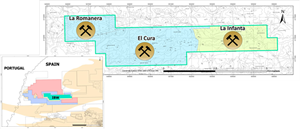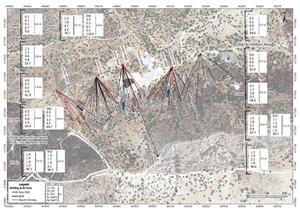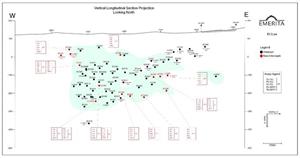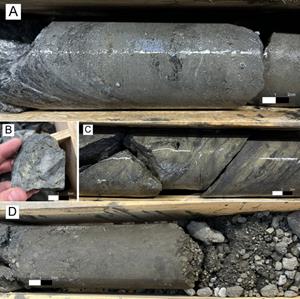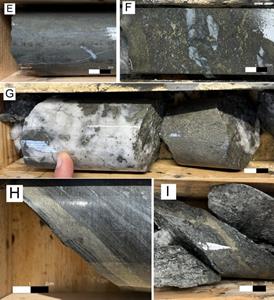Emerita Intersects 16.9 Meters Grading 1.4% Copper, 2.1% Zinc, 0.93 g/t Gold, 42.66 g/t Silver and 7.2 Meters Grading 1.0% Copper, 1.9% Zn, 1.31 g/t Gold, 60.10 g/t Silver at El Cura Deposit
TORONTO, Aug. 20, 2025 (GLOBE NEWSWIRE) -- Emerita Resources Corp. (TSX-V: EMO; OTCQB: EMOTF; FSE: LLJA) (the “Company” or “Emerita”) announces results from its ongoing resource expansion and in-fill drilling campaign at its El Cura deposit. El Cura is part of Emerita’s wholly owned Iberian Belt West project (“IBW” or the “Project”; Figure 1) which includes three Volcanogenic Massive Sulfide (VMS) deposits: La Romanera, El Cura and La Infanta.
El Cura deposit has potential to significantly increase IBW resource tonnes with additional high-grade gold and copper mineralization. The Company has approved an additional 10,000 meters of diamond drilling at El Cura due to the results of the program to date which demonstrate the deposit remains open for possible expansion at modest depth. This drilling will focus on converting the previously delineated Inferred Mineral Resource Estimate to an Indicated Mineral Resource Estimate in support of economic studies, as well as extending the lower and western regions of the known resource.
Recent results from the ongoing drilling campaign at El Cura include:
- Drill hole EC057: 3.1m grading 2.3% copper, 1.8% lead, 4.7% zinc, 2.21 g/t gold and 78.71 g/t silver, including a 1.9m interval grading 3.3% copper, 2.5% lead, 6.2% zinc, 3.13 g/t gold and 110.58 g/t silver.
- Drill hole EC062: 7.2m grading 1.0% copper, 1.4% lead, 1.9% zinc, 1.31 g/t gold and 60.10 g/t silver.
- Drill hole EC067: 16.9m grading 1.4% copper, 1.0% lead, 2.1% zinc, 0.93 g/t gold and 42.66 g/t silver, including a 3.1m interval grading 1.1% copper, 1.5% lead, 3.5% zinc, 1.46 g/t gold and 59.69 g/t silver.
- Drill hole EC068: 2.7m grading 1.3% copper, 1.0% lead, 3.2% zinc, 1.58 g/t gold and 46.59 g/t silver.

Figure 1. IBW tenement and locations of La Romanera, El Cura and La Infanta deposits.
View Figure 1 here: https://www.globenewswire.com/NewsRoom/AttachmentNg/ef61eb7b-7b49-49c7-b8f5-16f431445626
Table 1 shows drill results received subsequent to Company’s July 14, 2025 News Release.
Table 1: Recent drilling results received for El Cura deposit. True thickness is expected to be between 80-90% of core width for these intercepts.
View Table 1 here: https://www.globenewswire.com/NewsRoom/AttachmentNg/d414ac20-bf3e-4f99-ac68-8e3739d1a05e

Discussion
Methodical definition drilling has shown a distinct westward plunge to the deposit and the Company continues to trace this trend with drilling. Additional drill holes are in-progress nearer to surface to rapidly and cost-effectively grow the resource up dip. The majority of the reported results are in the upper western, lower eastern and lower central portions of the deposit (Figure 3). To the east, holes EC049C, EC064 and EC066 tested the lower eastern portion of the deposit, and the heart of the eastern zone has returned the thickest intercept yet at El Cura, in hole EC067. The central portion of the deposit continues to return notable results, as indicated by holes EC063 and EC059B (Table 1). Hole EC068 returned the third highest interval gold and silver grades at El Cura (2.7m grading 1.58 g/t gold, 46.59 g/t silver), after holes EC034 (1.1m grading 3.47 g/t gold, 148.18 g/t silver) and EC029B (0.8m grading 3.93 g/t Au, 213.00 g/t silver). In accordance with the westward plunge of the mineralization, holes EC060 and EC061 limit the upper margin of the deposit to the west, passing above the plunge of the massive sulphide layer, 130m from surface.
El Cura holds significant expansion potential at depth. With over 70 holes completed in the program, Emerita has demonstrated mineralization is more extensive than indicated by historical work in the 1970s and 1980s by previous operators. In the historical program, a single hole that tested 73m below surface was thought to close the deposit to the west but was too shallow to intercept the plunging mineralized zone. Emerita hole EC046 intercepted 8.9m grading 1.1% copper, 0.3% lead, 0.0% Zn, 1.21 g/t gold and 15.48 g/t silver 230m below the historic hole. Likewise, the deepest historical hole anywhere at El Cura intercepted the zone of interest 220m below surface, passing through a weakly mineralized zone of unsampled “low-grade”. On this same section however, Emerita has intercepted 1.7m grading 0.9% copper, 2.1% lead, 4.1% zinc, 2.12 g/t Au, and 69.82 g/t Ag in hole EC021, 270m below the historic blank hole and 413m below surface; as well as 3.0m grading 0.9% Cu, 1.3% Pb, 1.1% Zn, 1.33 g/t Au, and 53.46 g/t Ag in hole EC053, 214m below the historic blank hole and 357m below surface, among others. The Company will continue to delineate the El Cura resource which has not been fully outlined and potential exists well below the historic, superficial investigations.
A plan view map displaying the drill hole traces with the reported drill holes shown in redis included in Figure 2.

Figure 2. Plan view map showing drill hole traces of El Cura drilling. Hole traces in this news release are colored red.
View Figure 2 here: https://www.globenewswire.com/NewsRoom/AttachmentNg/2beeb7d0-596d-4707-9a09-f84c4106cea3

Figure 3. Vertical longitudinal section of El Cura deposit, oriented east-west, looking north. Holes EC049C, EC054, EC057, EC058, EC059B, EC060, EC061, EC062, EC063, EC064, EC065, EC066, EC067 and EC068. Deposit as presently delineated is indicated in green.
View Figure 3 here: https://www.globenewswire.com/NewsRoom/AttachmentNg/82fa4861-0033-4e69-87a7-1bb270f29522

Figure 4. Geological cross sections. A: Section 649550E showing holes EC057, EC060 and EC065. B: Section 649750E showing holes EC059B and EC062. C: Section 649580E showing hole EC068. D: Section 649900E showing hole EC058.
View Figure 4 here: https://www.globenewswire.com/NewsRoom/AttachmentNg/c1bd00a8-d105-4472-b82e-d8efe10969f1

Figure 4 continued. Geological cross sections. E: Section 649950E showing hole EC063. F: Section 650050E showing holes EC049C and EC067. G: Section 650100E showing holes EC049C, EC054 and EC066.
View Figure 4 here: https://www.globenewswire.com/NewsRoom/AttachmentNg/cdd19764-7282-4655-a6d8-ab4cb49a2998
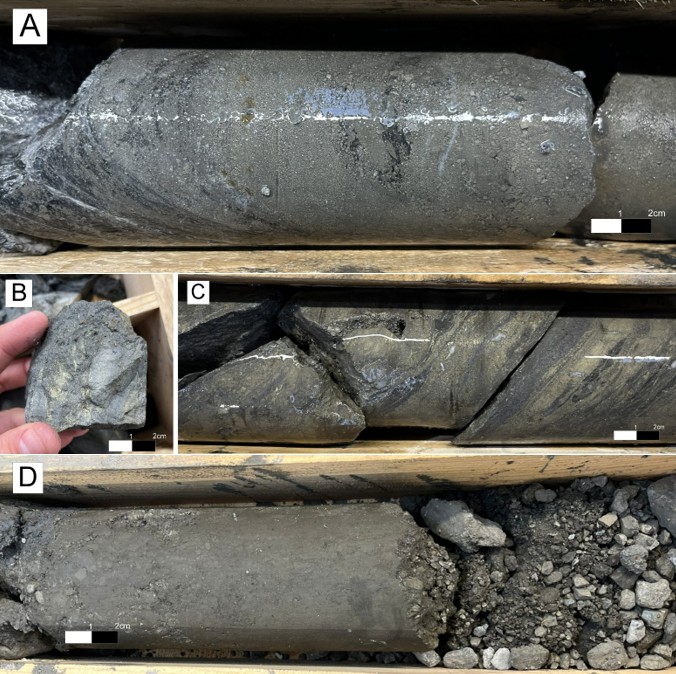
Figure 5. Photos of El Cura drillcore: A: EC049C fine grained pyritic massive sulphide. B: EC054 massive sulphide with chalcopyritic within fracture planes and in veinlets. C: EC057 massive sulphide with chalcopyrite rich layers and galena/sphalerite rich intervals. D: EC058 faulted pyritic massive sulphide.
View Figure 5 here: https://www.globenewswire.com/NewsRoom/AttachmentNg/ff0183fa-82a6-4352-b6fc-da8025968064
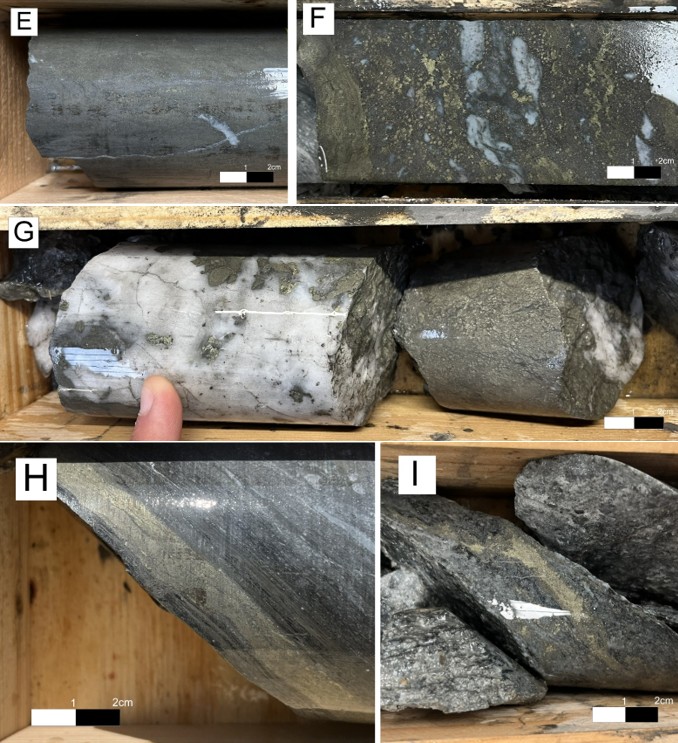
Figure 5 continued. Photos of El Cura drillcore: E: EC059B polymetallic massive suphide with fine stringers of chalcopyrite and galena/sphalerite. F: EC062 massive sulphide dominated by pyrite, with disseminated to patchy chalcopyrite, crosscut by quartz veinlets overprinted with chalcopyrite and sphalerite. G: EC063 massive sulphide with chalcopyrite in crystals and veinlets, seen associated with quartz veining. H: EC064 pyritic sulphide vein with mm chalcopyrite crystals. I: EC065 centimetric chalcopyrite blebs and crystals.
View Figure 5 here: https://www.globenewswire.com/NewsRoom/AttachmentNg/9f2147aa-3c47-4b43-aecd-5215d12c07dd
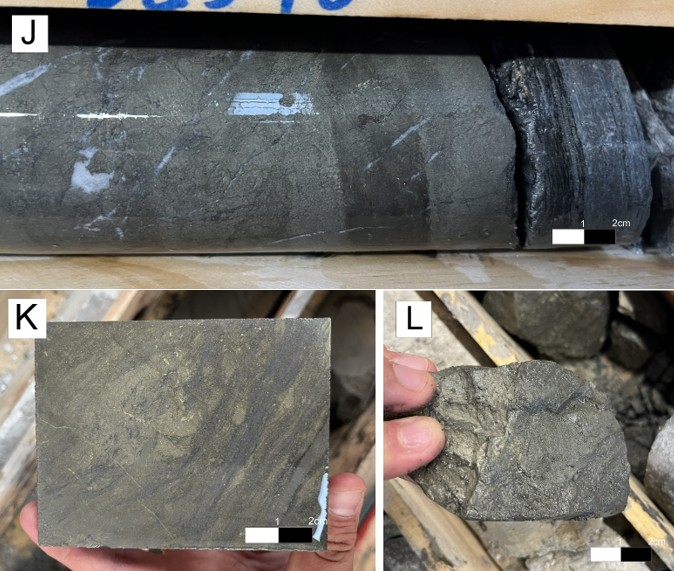
Figure 5 continued. Photos of El Cura drillcore: J: EC066 pyrite lens in contact with black shales. Sulfide assemblage is dominated by pyrite, sphalerite, and chalcopyrite. K: EC067 massive sulfide characterized by high proportions of chalcopyrite in both banded and patchy textures. Local bands of galena and sphalerite are also observed. L: EC068 massive sulfide with chalcopyrite in fractures and veinlets.
View Figure 5 here: https://www.globenewswire.com/NewsRoom/AttachmentNg/24b72388-30b9-4d27-b32a-8cd19bd7ee0f
“The ongoing success of the drill program at El Cura has led us to approve an additional 10,000 meters of drilling as the deposit remains open for expansion and continues to deliver intercepts of excellent thickness and grade. We are particularly interested in the improved understanding of the structural controls of the mineralization which suggest that previous investigators walked away without fully exploring the down plunge potential at El Cura,” states Joaquin Merino P.Geo., President of Emerita.
Quality Assurance/Quality Control
Drilling at El Cura is HQ size and core is placed into core trays at the drill site and transported directly from the site to Emerita’s coreshack (15Km) from El Cura. Once the cores are received at Emerita's coreshack they are photographed, and geotechnical logging is performed. Geological, mineralogical and structural logging follows and mineralized zones are identified. The samples are marked every 1m or less, and respecting lithological contacts, with most of the samples 1.0m long. The zone immediately above and below the mineralized zones are also sampled. Core samples are sawed in half and half of the core is returned to the core tray for future reference. Once the core samples are cut, bagged and tagged, they are shipped to the ALS laboratory in Seville by Emerita personnel where sample preparation is done. In Seville, ALS performs the mechanical preparation of the samples and then the pulps are sent to ALS Ireland (ICP) and ALS Romania (fire assay). The analysis at ALS Lab corresponds to the ME-ICPore (19 elements) package, together with the Au-AA23 fire assay (Gold).
10% of the analyzed samples correspond to control samples (fine blanks, coarse blanks, high, medium and low-grade standards). In addition, 10% of pulps are reanalyzed at a second independent certified laboratory (AGQ Lab Sevilla). When the analysis is completed, the certificates are received from the laboratory and the QA/QC protocol identifies any deviation or anomaly in the results and the entire batch is re-assayed in such case. Once the data is approved by the QA/QC protocol assays are entered digitally directly into the database.
Qualified Person
Scientific and technical information in this news release has been reviewed and approved by Joaquin Merino, P.Geo., who is a “Qualified Person” as defined by National Instrument 43-101 – Standards of Disclosure for Mineral Projects (“NI 43-101”) and President of the Company.
About Emerita Resources Corp.
Emerita is a natural resource company engaged in the acquisition, exploration, and development of mineral properties in Europe, with a primary focus on exploring in Spain. The Company’s corporate office and technical team are based in Sevilla, Spain with an administrative office in Toronto, Canada
For further information, contact:
Ian Parkinson
+1 647 910-2500 (Toronto)
info@emeritaresources.com
Cautionary Note Regarding Forward-looking Information
This press release contains “forward-looking information” within the meaning of applicable Canadian securities legislation. Forward-looking information includes, without limitation, statements regarding the prospectivity of the IBW project and El Cura, the mineralization and the IBW project, the economic viability of the IBW project, the Company’s exploration program, the Company’s future exploration plans and the Company’s future plans. Generally, forward-looking information can be identified by the use of forward-looking terminology such as “plans”, “expects” or “does not expect”, “is expected”, “budget”, “scheduled”, “estimates”, “forecasts”, “intends”, “anticipates” or “does not anticipate”, or “believes”, or variations of such words and phrases or state that certain actions, events or results “may”, “could”, “would”, “might” or “will be taken”, “occur” or “be achieved”. Forward- looking information is subject to known and unknown risks, uncertainties and other factors that may cause the actual results, level of activity, performance or achievements of Emerita, as the case may be, to be materially different from those expressed or implied by such forward-looking information, including but not limited to: general business, economic, competitive, geopolitical and social uncertainties; the actual results of current exploration activities; risks associated with operation in foreign jurisdictions; ability to successfully integrate the purchased properties; foreign operations risks; and other risks inherent in the mining industry. Although Emerita has attempted to identify important factors that could cause actual results to differ materially from those contained in forward-looking information, there may be other factors that cause results not to be as anticipated, estimated or intended. There can be no assurance that such information will prove to be accurate, as actual results and future events could differ materially from those anticipated in such statements. Accordingly, readers should not place undue reliance on forward-looking information. Emerita does not undertake to update any forward-looking information, except in accordance with applicable securities laws.
NEITHER TSX VENTURE EXCHANGE NOR ITS REGULATION SERVICES PROVIDER (AS THAT TERM IS DEFINED IN THE POLICIES OF THE TSX VENTURE EXCHANGE) ACCEPTS RESPONSIBILITY FOR THE ADEQUACY OR ACCURACYOF THIS RELEASE

Figure 1
IBW tenement and locations of La Romanera, El Cura and La Infanta deposits.
Table 1
Recent drilling results received for El Cura deposit. True thickness is expected to be between 80-90% of core width for these intercepts.
Figure 2
Plan view map showing drill hole traces of El Cura drilling. Hole traces in this news release are colored red.
Figure 3
Vertical longitudinal section of El Cura deposit, oriented east-west, looking north. Holes EC049C, EC054, EC057, EC058, EC059B, EC060, EC061, EC062, EC063, EC064, EC065, EC066, EC067 and EC068. Deposit as presently delineated is indicated in green.
Figure 4
Geological cross sections. A: Section 649550E showing holes EC057, EC060 and EC065. B: Section 649750E showing holes EC059B and EC062. C: Section 649580E showing hole EC068. D: Section 649900E showing hole EC058.
Figure 4 continued
Geological cross sections. E: Section 649950E showing hole EC063. F: Section 650050E showing holes EC049C and EC067. G: Section 650100E showing holes EC049C, EC054 and EC066.
Figure 5
Photos of El Cura drillcore: A: EC049C fine grained pyritic massive sulphide. B: EC054 massive sulphide with chalcopyritic within fracture planes and in veinlets. C: EC057 massive sulphide with chalcopyrite rich layers and galena/sphalerite rich intervals. D: EC058 faulted pyritic massive sulphide.
Figure 5 continued
Photos of El Cura drillcore: E: EC059B polymetallic massive suphide with fine stringers of chalcopyrite and galena/sphalerite. F: EC062 massive sulphide dominated by pyrite, with disseminated to patchy chalcopyrite, crosscut by quartz veinlets overprinted with chalcopyrite and sphalerite. G: EC063 massive sulphide with chalcopyrite in crystals and veinlets, seen associated with quartz veining. H: EC064 pyritic sulphide vein with mm chalcopyrite crystals. I: EC065 centimetric chalcopyrite blebs and crystals.
Figure 5 continued
Photos of El Cura drillcore: J: EC066 pyrite lens in contact with black shales. Sulfide assemblage is dominated by pyrite, sphalerite, and chalcopyrite. K: EC067 massive sulfide characterized by high proportions of chalcopyrite in both banded and patchy textures. Local bands of galena and sphalerite are also observed. L: EC068 massive sulfide with chalcopyrite in fractures and veinlets.
Legal Disclaimer:
EIN Presswire provides this news content "as is" without warranty of any kind. We do not accept any responsibility or liability for the accuracy, content, images, videos, licenses, completeness, legality, or reliability of the information contained in this article. If you have any complaints or copyright issues related to this article, kindly contact the author above.


